To keep from losing your molars, thoroughly brushing your teeth is key. In particular, it is necessary to brush them completely, all the way to the back (distal) surfaces of the last molars at the back of the mouth. To facilitate the maneuvering of the toothbrush within the narrow spaces of the oral caries, Lion studied various factors in toothbrush design and came to focus on slimming down the part of the toothbrush that enters the mouth by making the head thinner and the neck narrower.
We believed that a thinner head and a more slender neck would improve the maneuverability of the toothbrush in the mouth. Based on this idea, the development team set to work creating a new product. However, they quickly encountered problems with the strength of the head and neck and ensuring that the bristles were securely attached. Toothbrushes are made by folding long bristle bundles in two in the center, embedding them in tuft holes in the head and securing them with metal staples. Slimming down the brush, however, created many difficulties; for example, the bristles easily fell out, and the toothbrush was not strong enough. We therefore began the development of CLINICA Advantage Toothbrush by revisiting the basic materials used. We considered many possible materials, but settled on polyacetal, a high-strength plastic. This resin is hard enough to be used for machine parts, ensuring adequate toothbrush strength.
However, the particular molecular structure of polyacetal makes it difficult to work with. We therefore first had to design molding conditions to maximize the strength of polyacetal and secure sufficient strength as a toothbrush. Moreover, we conducted broad-ranging testing to confirm its strength using all kinds of experimental conditions based on the actual predicted customer usage, such as cracking of the toothbrush. As a result, we successfully developed a toothbrush with a thinner head and a more slender neck, reducing the volume of the part of the toothbrush that enters the mouth by 30% compared with conventional products.

To quantitatively confirm whether the toothbrush reaches the backs of the last molars, Lion partnered with
Chiba University to develop a 3D position measurement method.
This evaluation method employs magnetic sensors attached to the toothbrush and the user to precisely measure
the position of the toothbrush and the last molars during brushing.
Using this method, we confirmed that the end of head of the CLINICA Advantage Toothbrush reaches an
average of 7 mm further into the mouth than an ordinary toothbrush.
In addition, to evaluate the efficacy of plaque removal we developed a new method that entails the analysis of
images taken with an intraoral dental camera. The results obtained using this method showed that the plaque
removal efficacy of the CLINICA Advantage Toothbrush is approximately 1.3 times that of an ordinary
toothbrush.
CLINICA Advantage Toothbrush was developed with a focus on the backs of the molars. Easy to maneuver
within the mouth with its thin head and slender neck, the toothbrush effectively removes plaque on the second
and third molars.
*Presented at the 62nd general meeting of Japanese Society for Oral Health (2013):
1. Study on the reachability to the last molars of the super-slim toothbrush (Clinica Advantage Toothbrush®) with an extremely thin head and slender neck.
2. Study on the removability of the plaque on the last molars by the super-slim toothbrush (Clinica Advantage Toothbrush®) with an extremely thin head and slender neck.
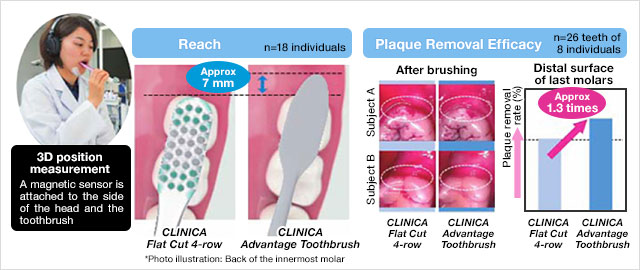
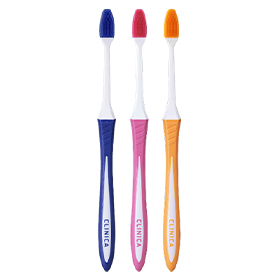
Toothbrush Technology and Manufacturing Method ~Debut of New Material Rubber Head Toothbrush~
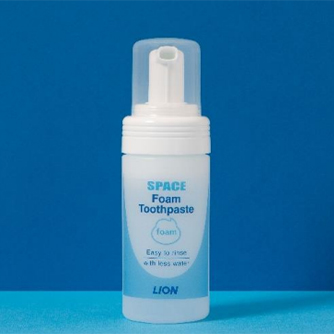
Toward a Society where Appropriate Oral Healthcare Can Be Realized for Everyone, Anytime, Anywhere Activities for Creating Better Living Habits in Space

Super-Tapered Bristle Toothbrushes for Periodontal Pocket Care
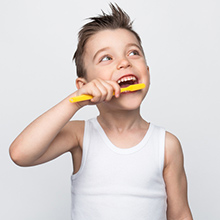
Reach the Backs of the Back Molars!

Development of STEP Toothbrushes Tailored to Specific Stages of Children’s Growth
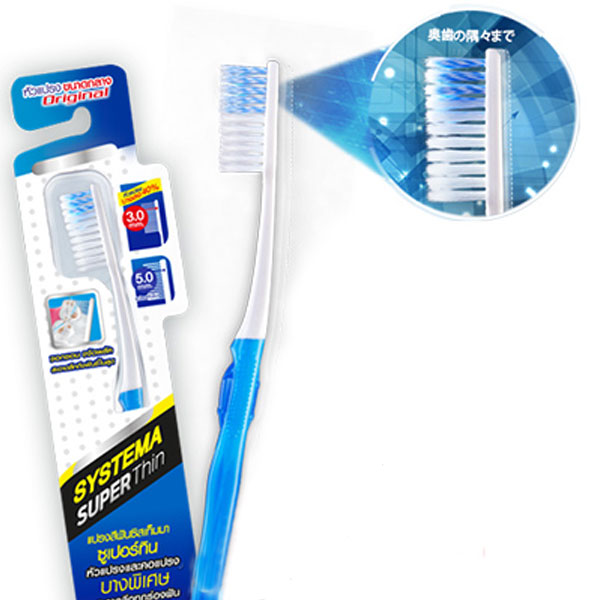
Overseas Roll Out of Super Thin Head, Slim Neck Toothbrushes Developed in Japan
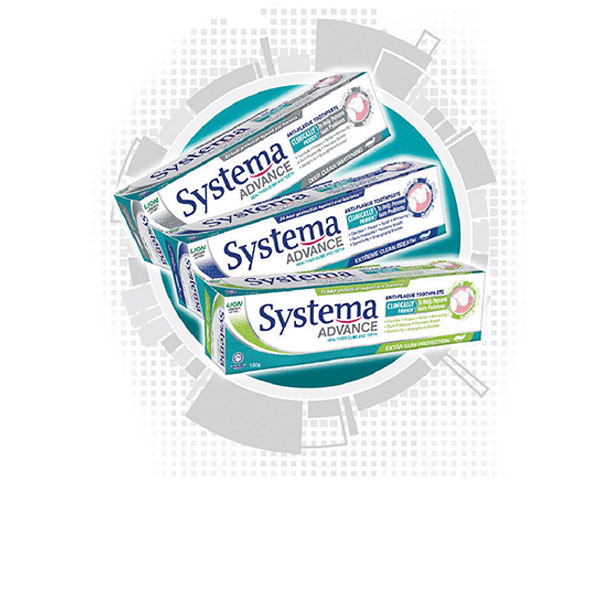
Utilizing Gum Disease Prevention Technologies with the Keyword “Plaque”

Preventive Dentistry Initiatives in Asia
Related Information